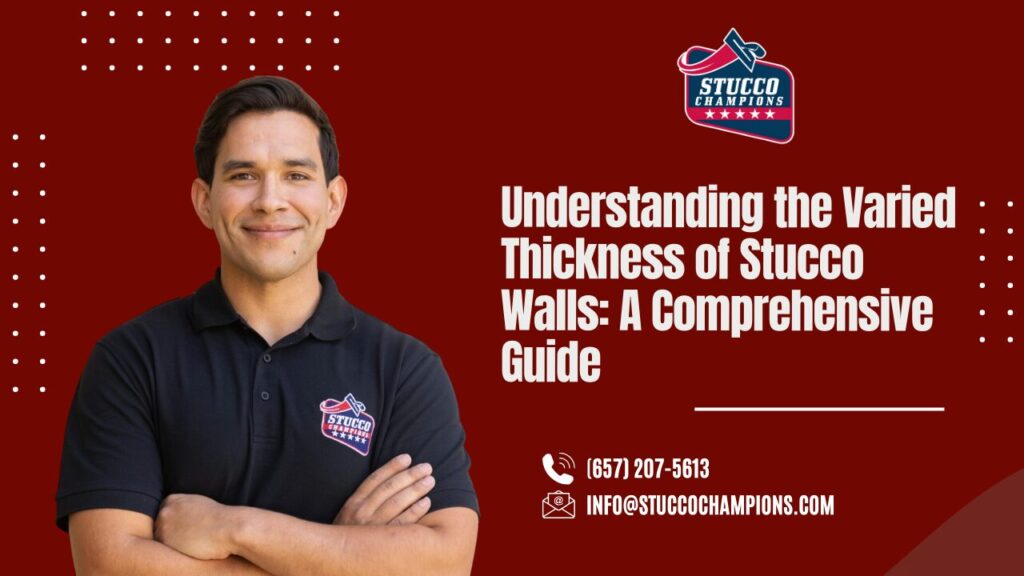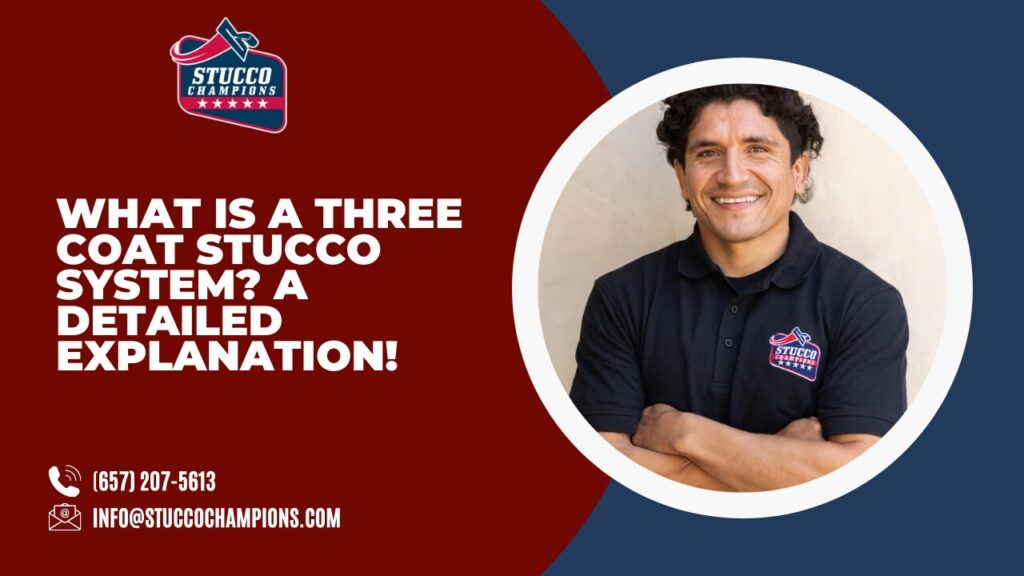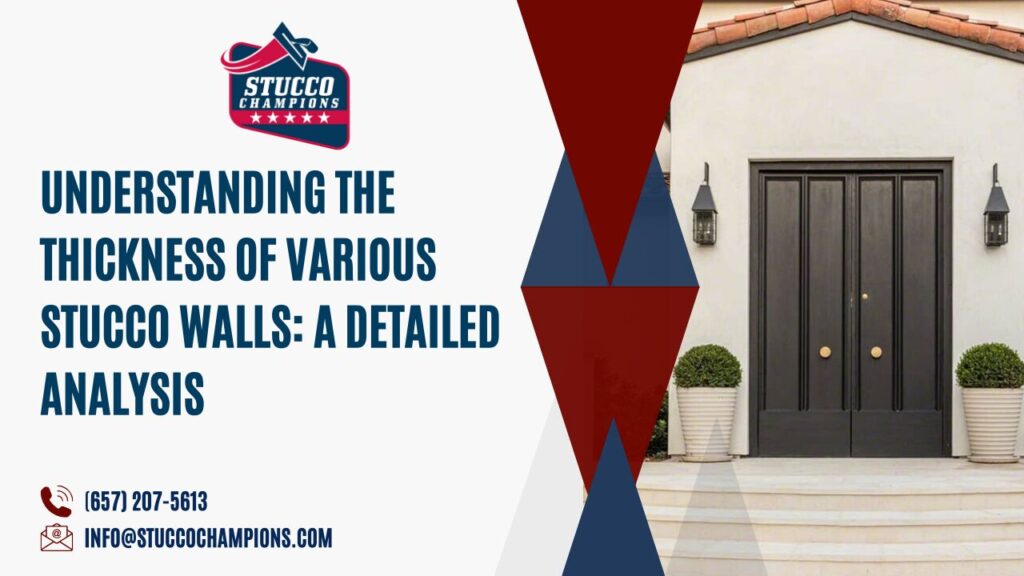Complexities of Stucco Walls
Navigating the complexities of stucco wall thickness can be challenging, especially when considering the variety of stucco systems available. In this article, I draw upon my extensive experience in the construction industry to demystify the factors influencing stucco thickness, while maintaining impartiality and focusing on the technical aspects of different stucco systems.
Overview of Stucco Thickness
Stucco thickness can range from 3/8″ to over 1 1/8″, influenced primarily by the type of stucco system used (e.g., three-coat, one-coat, EIFS, skim coat). Additional factors include the finish applied and the number of coats needed to achieve a specific texture.
Exploring Stucco Systems and Their Thicknesses
- Three-Coat System: This traditional system generally yields a thickness of 7/8″, achieved through the application of scratch and brown base coats before any finish is added. The scratch coat typically measures around 3/8″ thick, while the brown coat adds another layer of similar thickness.
- One-Coat System: Designed for efficiency, the one-coat system combines 1″ foam backing with a 3/8″ base coat, totaling a 1-3/8″ thickness before the finish coat.
- Stucco on Masonry Walls: When applied over smooth concrete or cinder block walls, the base coat averages 3/8″ thick. This is often sufficient for flat, flaw-free surfaces.
Finish Coats: Adding Depth and Texture
Finish coats are applied over base coats, adding extra thickness to the system. The depth added by finish coats can range from a minimal 1/16″ for a single coat of fine sand finish to up to 1/4″ for heavier textures like a two-coat heavy lace texture.
Technical Considerations
- Weep Screed and Grounds: In a three-coat system, elements like the weep screed and plaster stop are used to define the depth of the stucco. These are set at 7/8″, guiding the thickness of the scratch and brown coats.
- Application Variations: Stucco is often applied by hand, leading to slight variations in thickness. This is particularly evident in the scratch coat, which may range from 7/16″ to 1/2″ to adequately cover the lath or wire mesh beneath.
Addressing Walls Needing Special Attention
Certain conditions, like walls with residual mortar from removed stone, require additional preparation. In such cases, the base coat might need to be thicker (1/2″ to 3/4″ or more) to create a smooth, even surface.
One Coat Stucco System
The one-coat system includes 1″ of foam insulation and a 3/8″ base coat, achieving a depth of 1-3/8″ before the finish coat. This system is popular for its balance of insulation and stucco depth.
Variability in Stucco Walls Ground Sizes
Manufacturers offer various ground sizes to accommodate different systems, including thicker foam or rainscreen layers, as seen in some EIFS systems. These variations influence the overall stucco depth.
Professional Credentials and Transparency
As a professional with hands-on experience in applying various stucco systems, I aim to provide accurate and unbiased information. My insights are based on practical application and adherence to industry standards, without any brand affiliations or biases.
Enhancing Comprehension
- Weep Screed: A component installed at the bottom of exterior walls to allow moisture to escape.
- Grounds: Guides or markers, such as metal strips, are used to ensure consistent thickness in stucco application.
Pros and Cons of Different Thicknesses
- Thicker stucco systems, like the three-coat system, offer durability and classic aesthetics but require more labor and materials.
- Thinner systems, such as one-coat stucco, provide quicker installation and can be more cost-effective but might offer less durability and aesthetic variety.
Estimating Costs and Material Quantities
Costs and material requirements vary depending on the system chosen. Generally, three-coat systems are more material-intensive than one-coat systems. Accurate estimates should consider the system type, wall area, and labor costs.
Maintenance Considerations
Thicker stucco systems may require more rigorous maintenance due to their texture and depth. Regular inspections can identify potential issues like cracking or moisture infiltration early.
Tips for Measuring Existing Stucco Thickness
For homeowners or contractors looking to assess existing stucco, careful measurement using calipers or depth gauges at different points can provide a general idea of thickness. Consider consulting a professional for an accurate assessment, especially when planning repairs or renovations.
Conclusion
Understanding the varying thicknesses of stucco walls is crucial for homeowners and contractors alike. Whether considering a new installation or assessing an existing structure, knowledge of stucco systems, their application, and maintenance requirements ensures informed decisions. This guide, enriched with practical experience and a focus on technical detail, aims to clarify the complexities of stucco thickness, aiding in the selection of the most suitable system for specific needs.
Last week, we shared The Comprehensive Guide to Stucco Color Coats: Types, Applications, and Considerations, offering detailed insights into selecting the right color coat for your project. If you’re aiming for a durable and aesthetic stucco finish, be sure to check out this detailed guide for expert insights!




